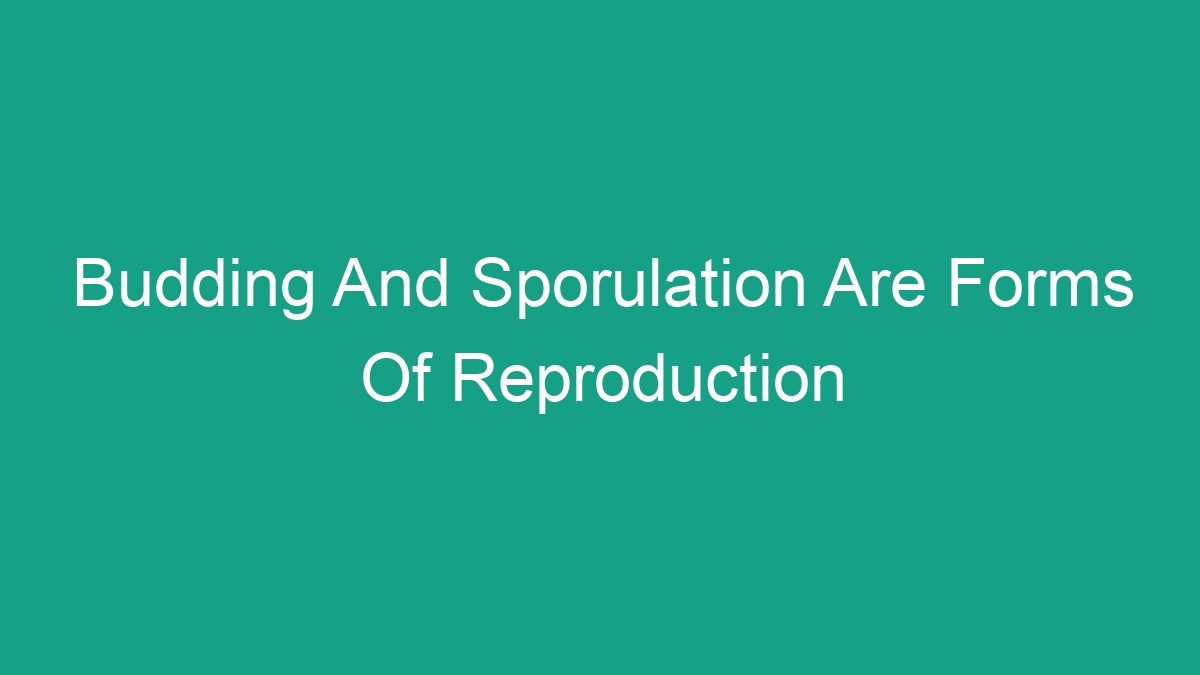
Reproduction is a fundamental process in biological organisms, essential for the continuation of the species. Two common forms of reproduction in microorganisms, such as fungi and certain types of algae, are budding and sporulation. This article will explore these two methods in detail, including their mechanisms, significance, and differences.
The Process of Budding
Budding is a form of asexual reproduction where a new organism develops as an outgrowth of the parent. This process occurs in various organisms, including yeast, hydra, and certain types of cnidarians.
- Parent cell develops a small, protrusion called a bud
- The bud grows in size and eventually detaches as a new individual
- Each new individual inherits genetic material from the parent
Budding is advantageous for organisms as it allows for quick population growth and can be beneficial in rapidly changing environments.
Sporulation: A Complex Reproductive Mechanism
Sporulation is a method of reproduction in which an organism produces specialized cells called spores. These spores have the ability to develop into new individuals under favorable conditions, allowing for survival even in harsh environments.
- Specialized structures form within the parent organism to produce spores
- Spores are released and dispersed into the environment
- Under suitable conditions, spores germinate and develop into new organisms
The ability to form spores provides organisms with a survival advantage in challenging conditions, as they can remain dormant until conditions become favorable for growth.
Differences between Budding and Sporulation
While both budding and sporulation are forms of asexual reproduction, there are key differences between the two processes.
- Budding: Involves the formation of a small outgrowth from the parent organism, eventually detaching as a new individual. Common in yeast and certain aquatic organisms.
- Sporulation: Involves the production of specialized reproductive cells called spores, which can remain dormant until conditions are favorable for growth. Common in fungi, bacteria, and certain types of algae.
- Budding results in the direct development of a new individual from the parent, while sporulation involves the formation of specialized reproductive cells.
Significance of Budding and Sporulation
The ability to reproduce via budding and sporulation offers significant advantages to organisms, particularly in terms of population growth and survival.
- Population Growth: Both budding and sporulation allow for rapid population expansion, enabling organisms to take advantage of favorable conditions for growth and resource availability.
- Environmental Adaptation: Budding and sporulation are effective strategies for adapting to changing environmental conditions, as they allow organisms to produce offspring without the need for a mate or complex reproductive structures.
- Long-Term Survival: Spores produced through sporulation can remain dormant for extended periods, ensuring the long-term survival of the organism even in harsh or unfavorable environments.
Conclusion
In conclusion, budding and sporulation are two forms of reproduction commonly observed in various microorganisms. These processes allow for rapid population growth, environmental adaptation, and long-term survival, providing significant advantages to the organisms utilizing them. While budding involves the direct development of a new individual from the parent, sporulation entails the production of specialized reproductive cells that can remain dormant until conditions are favorable for growth.
FAQs
What are the advantages of budding and sporulation?
Budding and sporulation enable rapid population growth, environmental adaptation, and long-term survival in challenging conditions.
Which organisms commonly reproduce through budding?
Yeast, hydra, and certain types of cnidarians are known to reproduce through budding.
What is the significance of sporulation in microorganisms?
Sporulation allows microorganisms to produce specialized reproductive cells (spores) that can remain dormant until conditions are favorable for growth, ensuring long-term survival.



